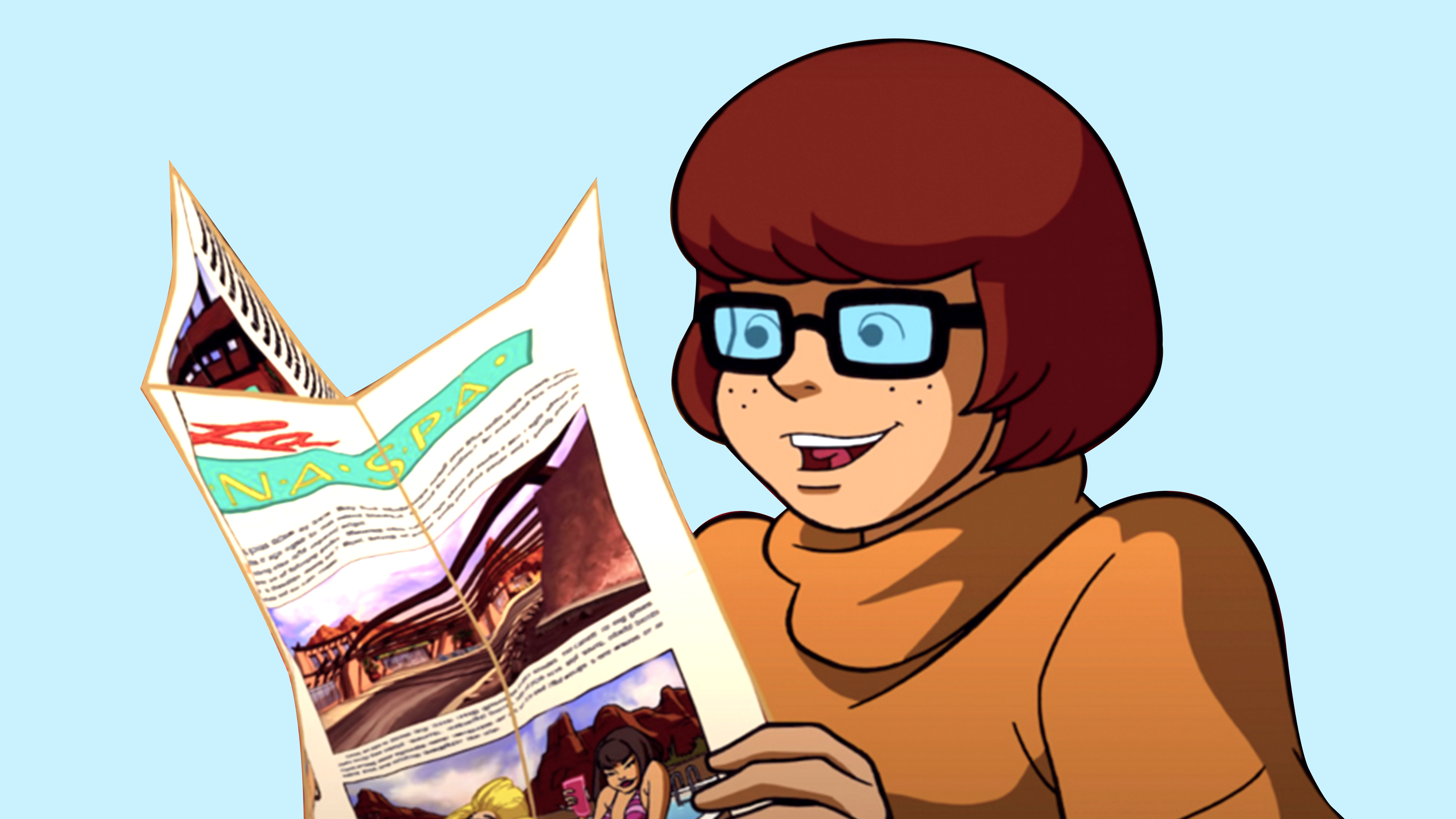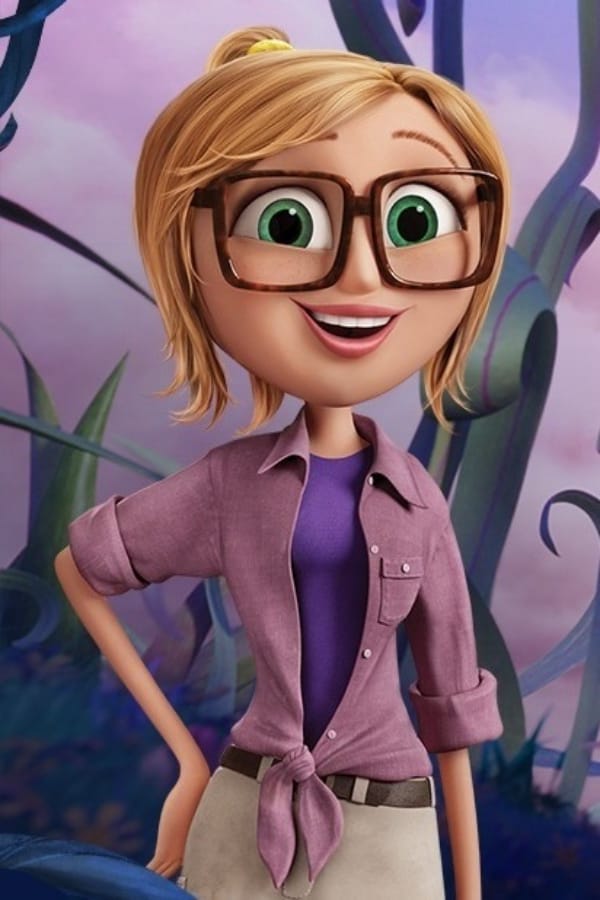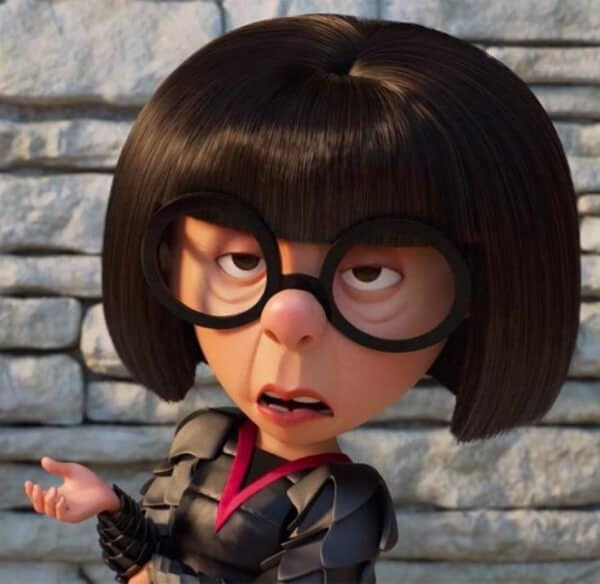Eye-Catching Characters: The Spectacled Elite
Characters who wear glasses are individuals depicted in literature, film, and other media who utilize eyeglasses or spectacles to correct their vision.
Characters who wear glasses hold significance in storytelling, as they can convey a variety of traits and characteristics. They may be portrayed as intelligent, studious, or even eccentric. Glasses can serve as a physical manifestation of a character's inner qualities, allowing readers or viewers to make inferences about their personality and motivations.
Beyond their symbolic value, glasses can play a practical role in storytelling. They can create visual interest, differentiate characters, and add depth to the narrative. In some cases, glasses may even become iconic symbols associated with particular characters, enhancing their memorability and recognition.
Throughout history, characters who wear glasses have appeared in countless works of fiction. From the bespectacled sage in ancient Greek literature to the iconic Harry Potter, glasses have adorned the faces of memorable characters, leaving a lasting impression on readers and viewers alike.
Characters who wear glasses
Characters who wear glasses are a common sight in literature, film, and other media. They come from all walks of life and can have a variety of personalities and motivations. However, they all share one thing in common: their glasses.
- Identity: Glasses can be a way for characters to express their individuality and sense of style.
- Intelligence: Glasses are often associated with intelligence and studiousness.
- Eccentricity: Glasses can also be a sign of eccentricity or quirkiness.
- Vulnerability: Glasses can make characters appear more vulnerable and sympathetic.
- Disguise: Glasses can be used as a disguise to conceal a character's true identity.
- Fashion: Glasses can be a fashion statement, adding a touch of style to a character's overall appearance.
- Symbolism: Glasses can be used as a symbol to represent a character's inner qualities or experiences.
The key aspects of characters who wear glasses explored above highlight the diverse and multifaceted nature of this trope. Glasses can serve a variety of purposes in storytelling, from conveying character traits to advancing the plot. They can also be used to create visual interest, differentiate characters, and add depth to the narrative. Ultimately, the use of glasses in character design is a powerful tool that can be used to create memorable and engaging characters.
Identity
In literature, film, and other media, characters who wear glasses often use their eyewear as a way to express their individuality and sense of style. Glasses can be a defining characteristic that sets a character apart from others, and they can also be used to convey a character's personality and interests.
- Fashion Statement
Glasses can be a fashion statement, and characters who wear them can use their eyewear to express their personal style. For example, a character who wears bold, oversized glasses may be seen as confident and stylish, while a character who wears delicate, understated glasses may be seen as more reserved and intellectual. - Cultural Expression
Glasses can also be a way for characters to express their cultural identity. For example, in some cultures, glasses are seen as a symbol of intelligence and scholarship, while in other cultures, they may be seen as a sign of weakness or vulnerability. - Personal Expression
Glasses can also be a way for characters to express their personal experiences and emotions. For example, a character who wears glasses that are constantly fogging up may be seen as someone who is always crying, while a character who wears glasses that are always falling off may be seen as someone who is clumsy or forgetful. - Character Development
Glasses can also be used to develop a character over time. For example, a character who starts out wearing glasses may become more confident and self-assured as they grow and change, and their glasses may become less of a defining characteristic.
Ultimately, the way that characters who wear glasses express their individuality and sense of style is up to the author or creator. However, glasses can be a powerful tool for creating unique and memorable characters.
Intelligence
In literature, film, and other media, characters who wear glasses are often depicted as intelligent and studious. This association is likely due to the fact that glasses are often used to correct vision problems, which can make it easier for people to read and learn. Additionally, glasses can give people a more serious and professional appearance, which may lead others to perceive them as being more intelligent.
- Knowledge and Expertise
Characters who wear glasses are often portrayed as having a deep knowledge and expertise in a particular subject area. For example, a character who wears glasses may be a brilliant scientist, a renowned doctor, or a wise professor.
- Academic Achievement
Characters who wear glasses are also often depicted as being high achievers in school. They may be the top of their class, earn scholarships, and go on to successful careers.
- Intellectual Curiosity
Characters who wear glasses are often driven by an insatiable intellectual curiosity. They are always seeking out new knowledge and experiences, and they are always eager to learn more about the world around them.
The association between glasses and intelligence is a powerful one, and it can have a significant impact on how characters are perceived by others. Characters who wear glasses are often seen as being more intelligent, capable, and trustworthy. This can give them an advantage in both their personal and professional lives.
Eccentricity
In literature, film, and other media, characters who wear glasses are often depicted as eccentric or quirky. This association is likely due to the fact that glasses can make people appear different from others. Additionally, people who wear glasses may be more likely to embrace their individuality and express themselves in unique ways.
- Non-Conformity
Characters who wear glasses are often non-conformists who march to the beat of their own drum. They may have unique interests, hobbies, and fashion sense. They may also be more likely to challenge the status quo and express themselves in unconventional ways.
- Creativity
Characters who wear glasses are often creative and imaginative. They may be writers, artists, musicians, or other types of creatives. They may also be more likely to come up with new ideas and solutions to problems.
- Intelligence
Characters who wear glasses are often intelligent and curious. They may be voracious readers and lifelong learners. They may also be more likely to have a deep understanding of the world around them.
- Social Awkwardness
Characters who wear glasses are sometimes depicted as being socially awkward or shy. This may be due to the fact that they may feel different from others and may have difficulty fitting in. However, characters who wear glasses can also be outgoing and confident.
The association between glasses and eccentricity is a complex one. However, it is clear that glasses can be a powerful tool for creating unique and memorable characters. Characters who wear glasses are often seen as being more interesting, complex, and relatable than characters who do not wear glasses.
Vulnerability
In literature, film, and other media, characters who wear glasses are often depicted as more vulnerable and sympathetic than characters who do not wear glasses. This is likely due to the fact that glasses can make people appear more physically and emotionally vulnerable. Physically, glasses can make people's eyes appear larger and more expressive, which can make them seem more innocent and childlike. Emotionally, glasses can make people appear more shy and introverted, which can make them seem more vulnerable and in need of protection.
The association between glasses and vulnerability can be seen in a number of different characters. For example, the character of Harry Potter is often depicted as being vulnerable and sympathetic, and his glasses are a key part of his appearance. Other examples include the character of Clark Kent/Superman, who uses glasses to disguise his true identity and appear more vulnerable, and the character of Velma Dinkley from Scooby-Doo, who is often depicted as being clumsy and vulnerable, and whose glasses are a key part of her appearance.
The use of glasses to create vulnerable and sympathetic characters is a powerful tool that can be used by authors and creators to evoke empathy and compassion from readers and viewers. By making characters appear more vulnerable, glasses can make them more relatable and easier to connect with, which can lead to a more immersive and emotionally engaging experience for the audience.
Disguise
In literature, film, and other media, glasses are often used as a disguise to conceal a character's true identity. This is because glasses can change a person's appearance in a number of ways. They can make a person look older or younger, more or less intelligent, and more or less attractive. They can also change the shape of a person's face and the color of their eyes.
The use of glasses as a disguise is a common trope in storytelling. Some of the most famous examples include Clark Kent/Superman, who uses glasses to disguise his true identity as Superman, and Peter Parker/Spider-Man, who uses glasses to disguise his true identity as Spider-Man. Glasses have also been used as a disguise in many other popular works of fiction, including the Harry Potter series, the James Bond series, and the Mission Impossible series.
The use of glasses as a disguise is a powerful tool that can be used to create suspense, mystery, and intrigue. It can also be used to create humor and to develop a character's backstory. When used effectively, glasses can be a valuable tool for storytellers.
Fashion
In storytelling, the use of glasses as a fashion statement is a powerful tool that can enhance a character's overall image and convey their unique style. Glasses can transform a character's appearance, adding a touch of sophistication, mystery, or even playfulness.
- Trendy Accessory
Glasses can be a trendy accessory that reflects the latest fashion trends. From oversized frames to bold colors and patterns, glasses can add a touch of style and personality to any outfit.
- Personality Expression
Glasses can be a way for characters to express their individuality and personality. Whether they choose classic, retro, or avant-garde frames, glasses can convey a character's unique style and sense of self.
- Character Development
Glasses can play a role in a character's development and transformation. A character's choice of glasses may change over time, reflecting their evolving personality and life experiences.
- Cultural Symbol
Glasses can also carry cultural significance, representing a particular era, social group, or profession. For example, thick-rimmed glasses may be associated with intellectuals, while aviator sunglasses may evoke a sense of adventure.
By incorporating glasses as a fashion statement, writers and creators can add depth and complexity to their characters, making them more visually appealing and relatable to readers and viewers.
Symbolism
In storytelling, glasses are not merely visual aids but potent symbols that carry. They offer a unique opportunity to convey a character's inner qualities, motivations, and life experiences.
The choice of glasses can reveal a character's personality traits. For instance, thick-rimmed glasses may suggest intelligence and studiousness, while oversized, flamboyant frames may indicate creativity and a desire to stand out.
Glasses can also symbolize a character's emotional state. Tinted lenses may represent a desire for privacy or a way to hide one's true feelings, while broken glasses may symbolize vulnerability or a loss of innocence.
Furthermore, glasses can hold cultural significance. In some contexts, they may symbolize wisdom and authority, while in others, they may represent weakness or a lack of confidence.
The symbolism of glasses is not limited to fictional characters. In real life, people often choose glasses that reflect their personality and aspirations. For example, a CEO may wear glasses that convey power and sophistication, while an artist may choose glasses that express their creativity and individuality.
Understanding the symbolism of glasses is crucial for fully appreciating the depth and complexity of characters who wear them. By paying attention to the shape, color, and style of a character's glasses, readers and viewers can gain valuable insights into their inner world and motivations.
Frequently Asked Questions about Characters who Wear Glasses
Glasses are a common accessory worn by individuals of all ages and backgrounds. In literature, film, and other forms of storytelling, characters who wear glasses often possess distinct personality traits and characteristics. Here are answers to some frequently asked questions about characters who wear glasses:
Question 1: Are characters who wear glasses always intelligent?
While glasses are often associated with intelligence, it is essential to remember that not all characters who wear glasses are highly intelligent. Glasses are primarily used to correct vision problems and can be worn by individuals with varying levels of intelligence and abilities.
Question 2: Do characters who wear glasses always have poor eyesight?
Not necessarily. Some characters who wear glasses may have perfect vision but choose to wear glasses as a fashion accessory or for other reasons. Glasses can also be used to protect the eyes from the sun or other environmental factors.
Question 3: Are characters who wear glasses always shy or introverted?
Characters who wear glasses exhibit a wide range of personalities and temperaments. While some may be shy or introverted, others may be outgoing and confident. The personality of a character who wears glasses is not solely determined by their eyewear.
Question 4: Do glasses always make characters appear more attractive?
Whether or not glasses make a character appear more attractive is subjective and varies depending on individual preferences. Some people may find glasses appealing, while others may not. Ultimately, the attractiveness of a character who wears glasses is a matter of personal opinion.
Question 5: Are characters who wear glasses always portrayed positively?
In storytelling, characters who wear glasses can be portrayed positively or negatively, depending on the author's or creator's intent. Glasses can be used to convey a variety of character traits, including intelligence, vulnerability, eccentricity, and fashion sense.
Question 6: Why are glasses often used as a symbol in storytelling?
Glasses are a versatile symbol that can be used to represent a variety of concepts and ideas. For instance, glasses can symbolize intelligence, knowledge, wisdom, vulnerability, or disguise. The use of glasses as a symbol allows authors and creators to convey complex messages and themes in their stories.
In conclusion, characters who wear glasses are a diverse and multifaceted group, encompassing a wide range of personalities, traits, and motivations. Glasses can be used as a literary device to convey a variety of messages and themes, adding depth and complexity to storytelling.
Transition to the next article section: Exploring the Symbolism of Glasses in Literature and Film
Tips for Writing Characters Who Wear Glasses
Characters who wear glasses are a common sight in literature, film, and other forms of storytelling. They come from all walks of life and can have a variety of personalities and motivations. However, glasses can be more than just a visual accessory; they can also be used to convey important character traits and to develop the story.
Tip 1: Use Glasses to Convey Character Traits
Glasses can be used to convey a variety of character traits, both positive and negative. For example, characters who wear glasses may be intelligent, studious, or eccentric. They may also be shy, vulnerable, or insecure.
Tip 2: Use Glasses to Develop the Story
Glasses can also be used to develop the story. For example, a character who loses their glasses may be forced to rely on their other senses to navigate the world. This can lead to new challenges and opportunities for the character.
Tip 3: Choose the Right Glasses for Your Character
The type of glasses that a character wears can say a lot about their personality. For example, a character who wears thick, black-rimmed glasses may be seen as intelligent and serious, while a character who wears thin, wire-rimmed glasses may be seen as more creative and artistic.
Tip 4: Use Glasses to Create Contrast
Glasses can be used to create contrast between characters. For example, a character who wears glasses may be paired with a character who does not. This can highlight the differences between the two characters and make them more memorable.
Tip 5: Use Glasses as a Symbol
Glasses can also be used as a symbol. For example, glasses may be used to represent intelligence, knowledge, or wisdom. They may also be used to represent vulnerability or disguise.
Summary
Glasses can be a powerful tool for writers. They can be used to convey character traits, develop the story, and create contrast. By choosing the right glasses for your character and using them effectively, you can create memorable and engaging characters that will stay with your readers long after they finish your story.
Transition to the article's conclusion: Conclusion: The Importance of Character Development
Conclusion
Throughout history, characters who wear glasses have played a significant role in storytelling. They have been used to convey a wide range of character traits, from intelligence to vulnerability. Glasses can also be used to develop the story, create contrast, and serve as symbols.
In an era where visual media dominates, the use of glasses in character design has become increasingly important. Glasses can help to create memorable and engaging characters that resonate with audiences. By understanding the power of glasses, writers, and creators can craft characters that are both visually appealing and deeply human.

10 Cartoon Characters with Glasses we all Love

35 Famous Cartoon Characters with Glasses

30 Famous Female Cartoon Characters With Glasses Artistic Haven